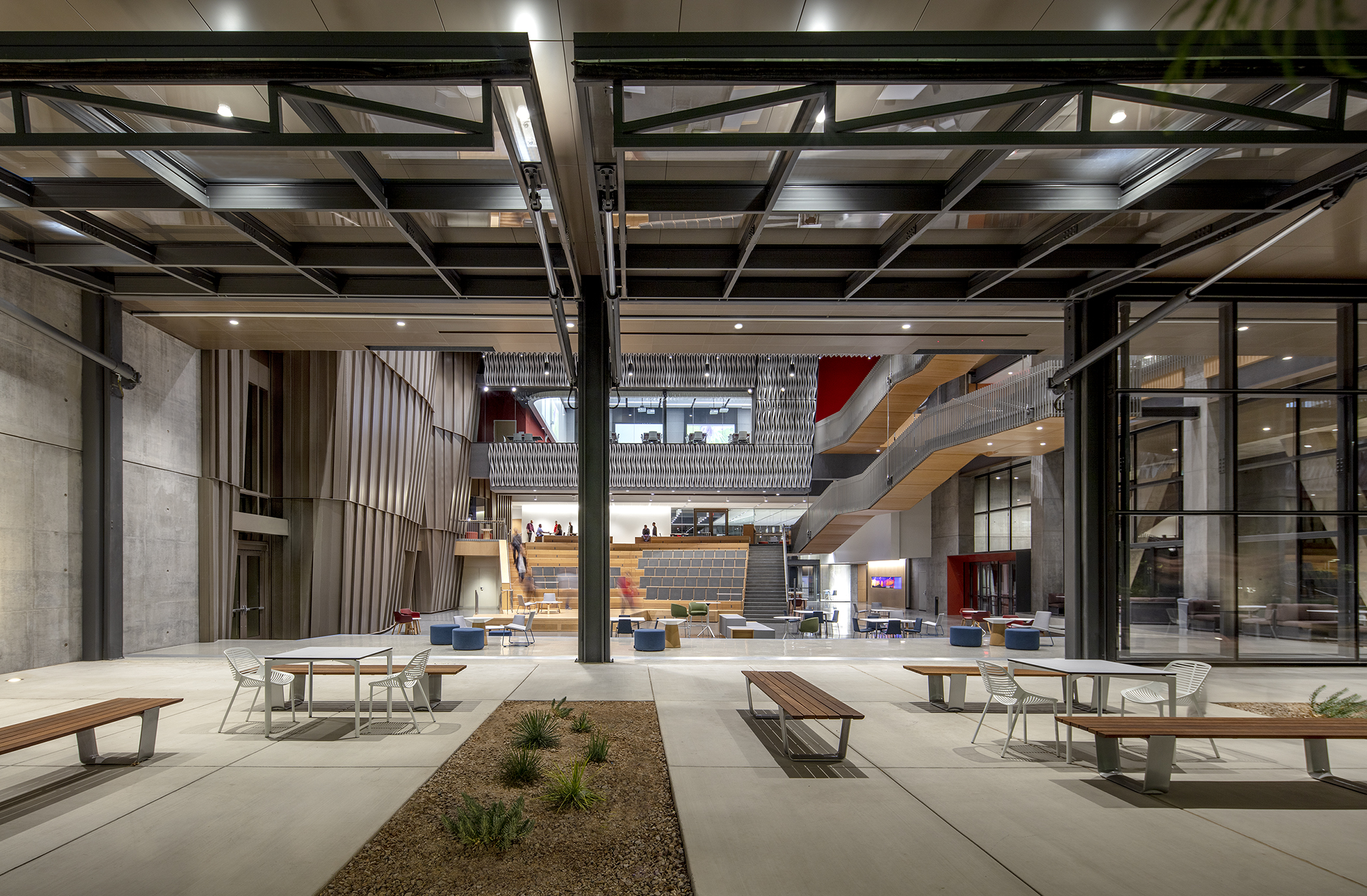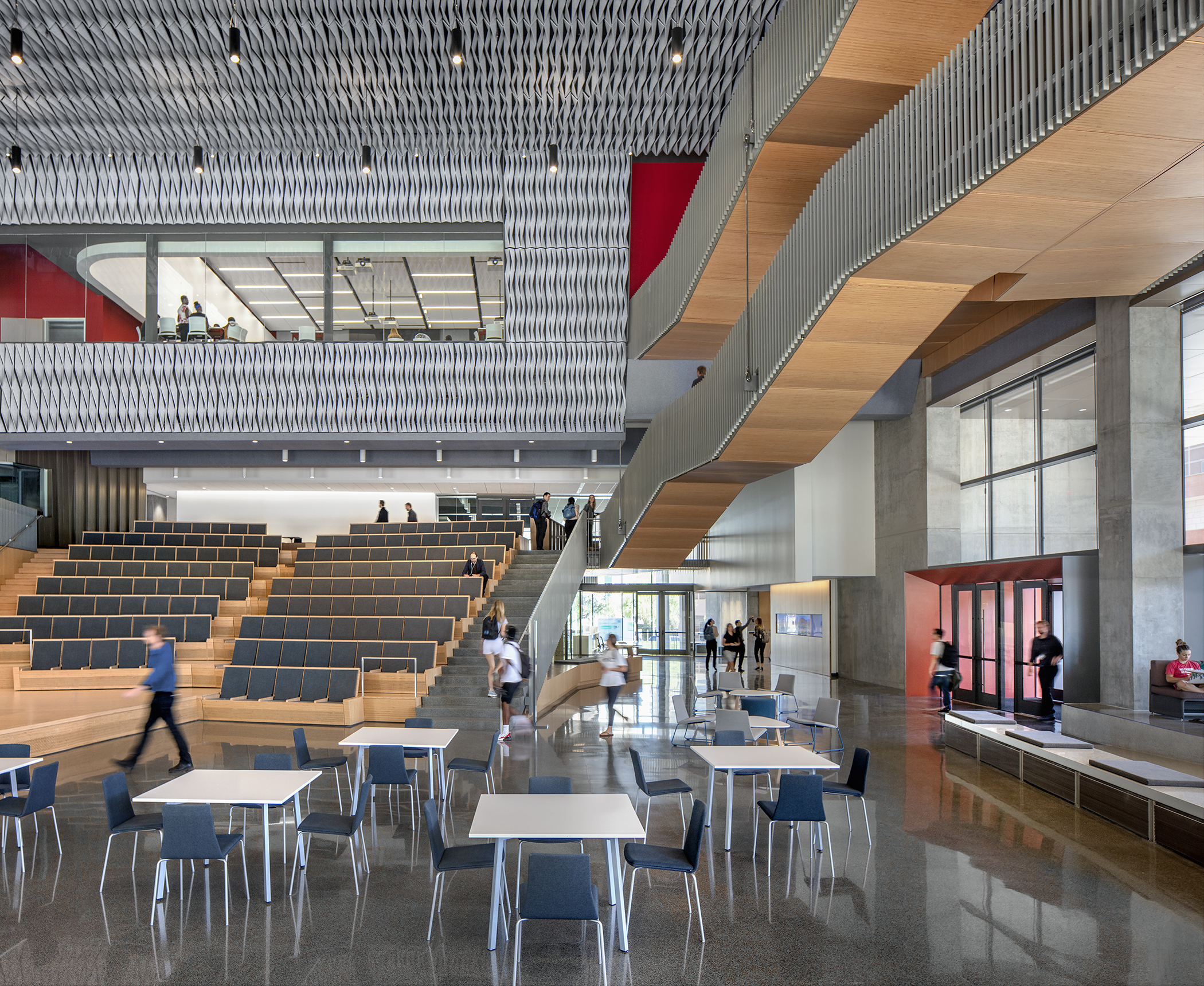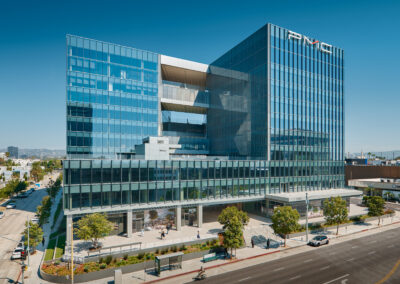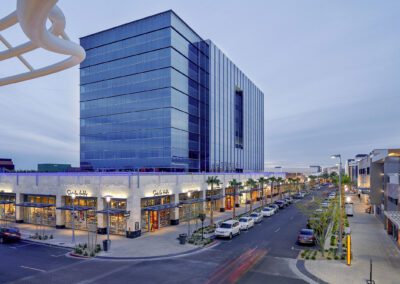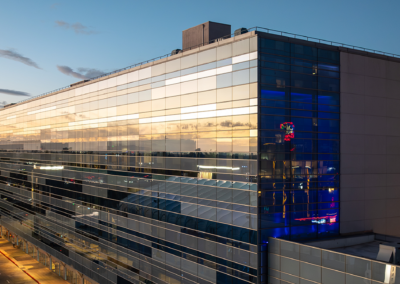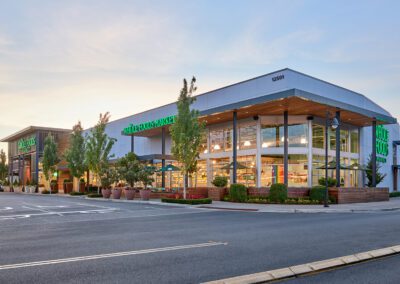University of Arizona Health Sciences Innovation Building (HSIB)
Details
- Size: 220,000 square feet
- Completion Date: 2019
Team
- Architect: CO Architects
- Contractor: Kitchell Contractors
The Health Sciences Innovation Building (HSIB) is a new, 9-story laboratory and research facility totaling 220,000 square feet and is located on the University of Arizona Medical Center campus in Tucson, Arizona. The building includes one subgrade basement level that connects to the adjacent buildings through two new underground tunnels. Supporting the Colleges of Medicine, Nursing, Pharmacy, and Public Health, HSIB fosters interprofessional and multidisciplinary learning among teams of health professionals, students and faculty.
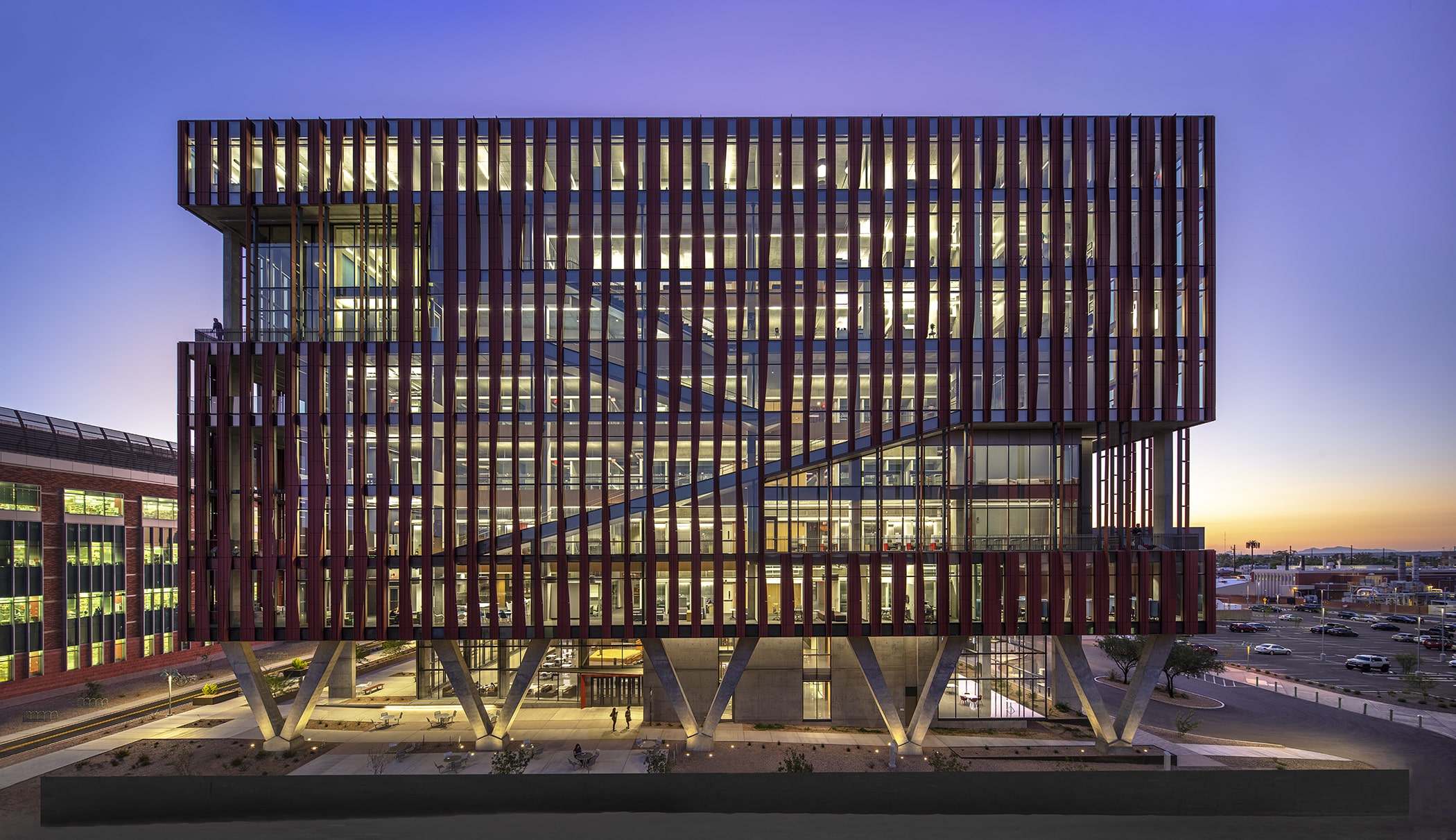
The building program includes a clinical skills and simulation center, classrooms, flexible learning areas, research labs, social and collaboration spaces, and a large amphitheater-style lecture hall called The Forum which can accommodate up to 1,000 people. The wide variety of program spaces are linked by stairs interconnecting all levels.

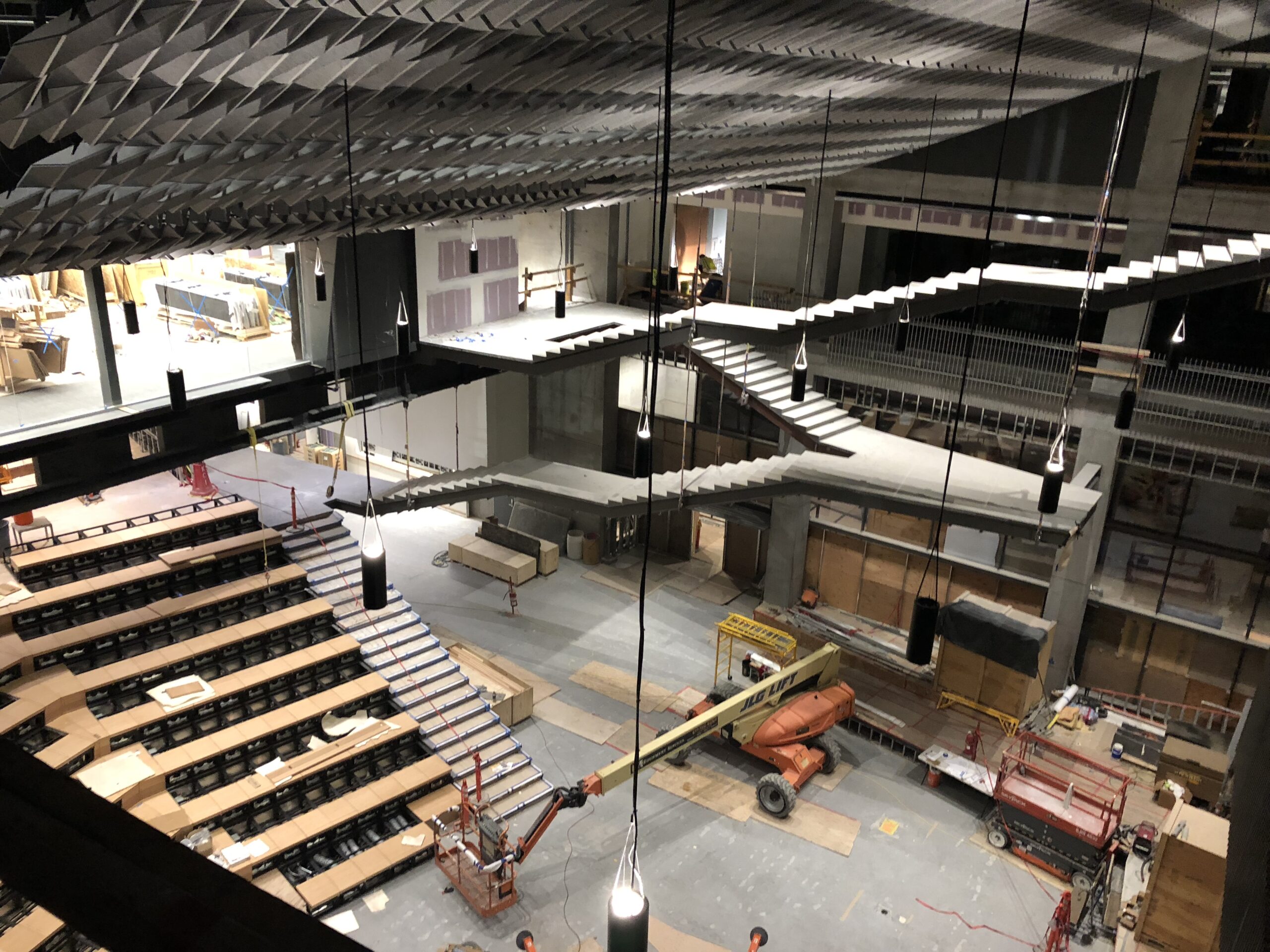
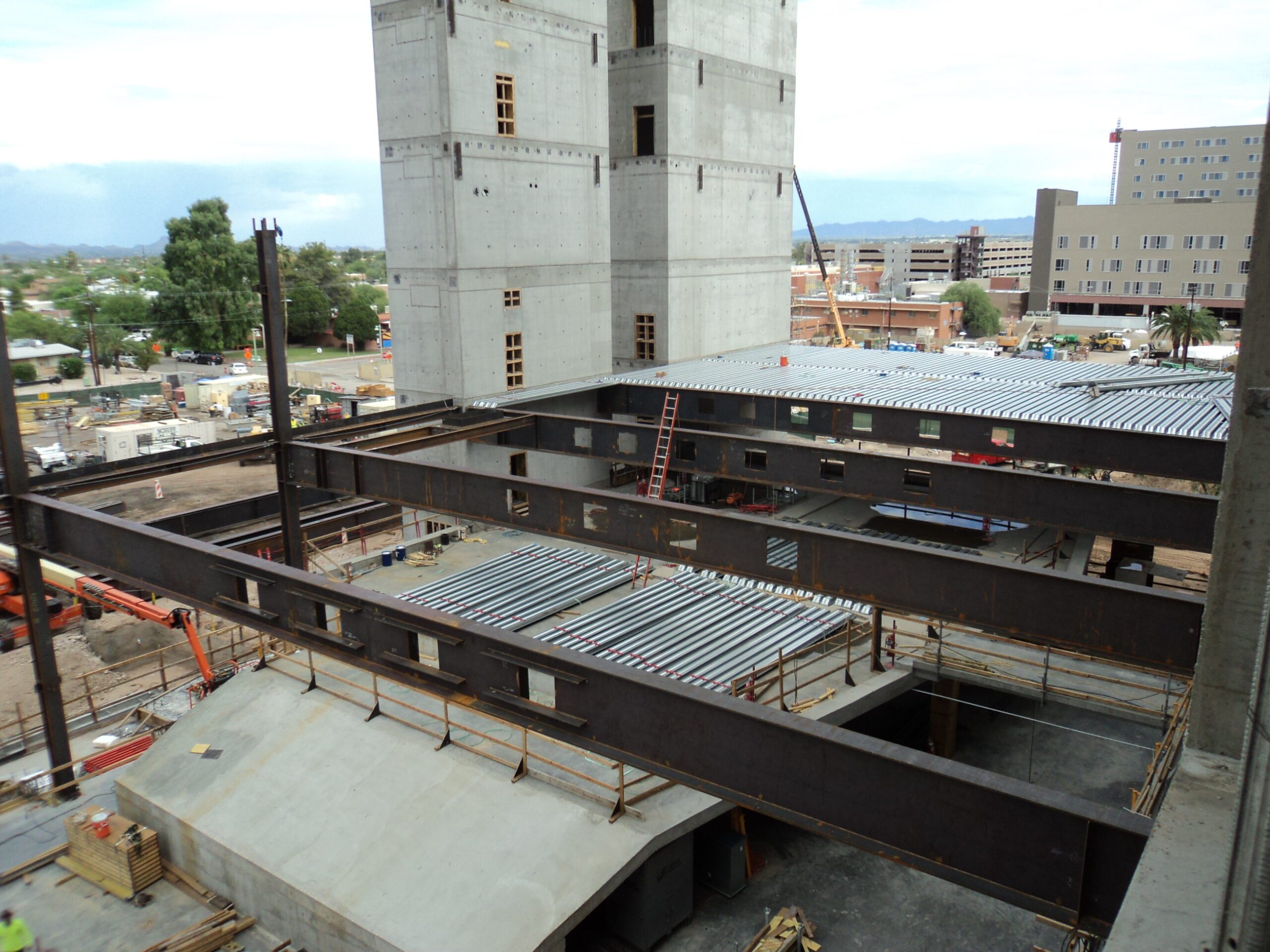
The east elevation of the building is characterized by a series of two-story V-columns that serve both functional and aesthetic purposes. The converging columns provides open access to the Forum from the ground level, drawing community members into the building, and accommodating an indoor/outdoor experience created by three large glass garage doors that open to extend the space to the outdoors.
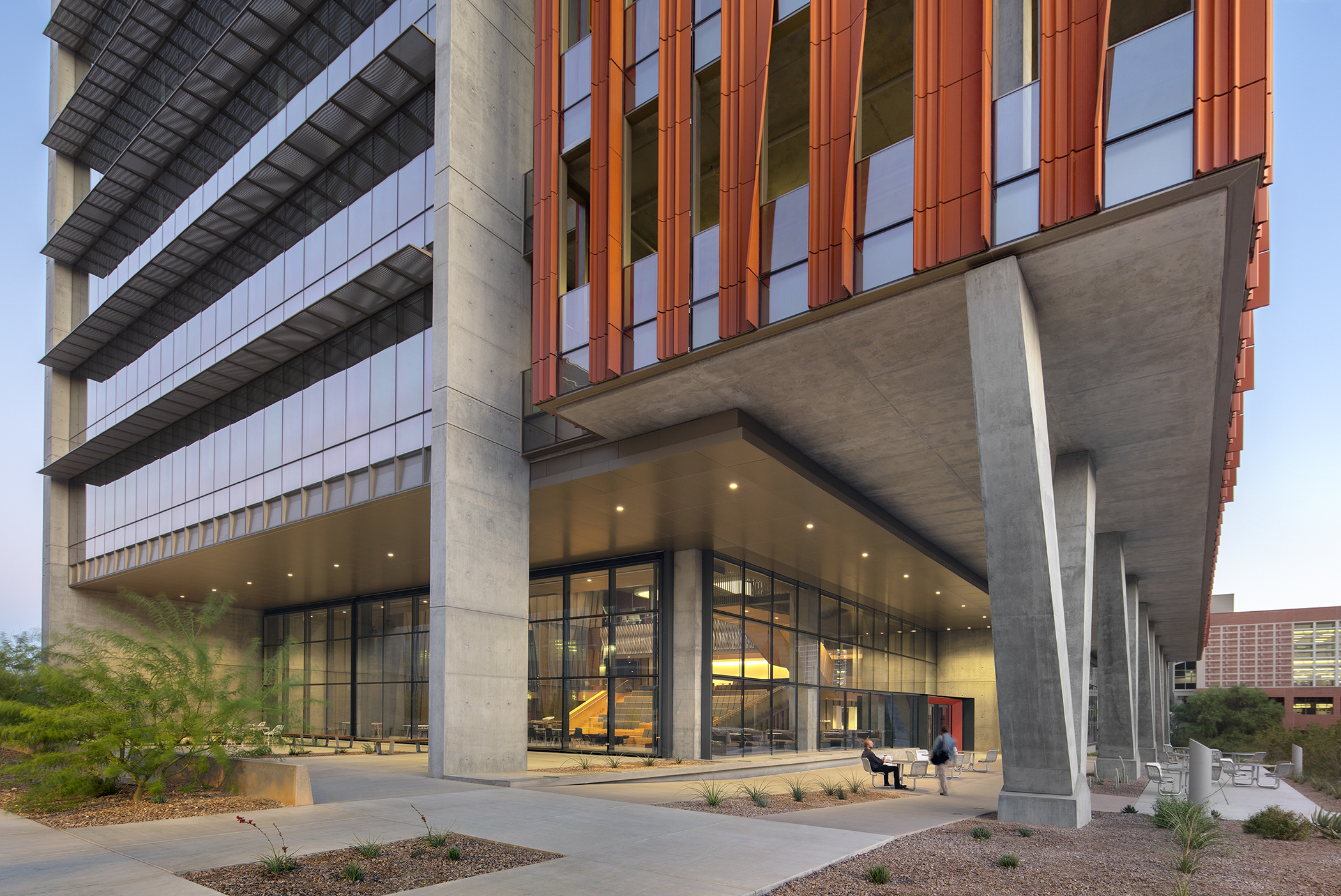
The project was completed and delivered in only 37 months, from the start of conceptual design through construction. Key to the fast-track delivery was a series of pre‐design discussions, where an initial structural system was selected that could accommodate site constraints such as tunnel connections to the surrounding structures, logistical challenges such as minimal lay‐down areas and oversized deliveries, and best value to the University to meet the proposed $165 million budget. Early engagement allowed us to evaluate different structural solutions that met the programmatic needs yet provided flexibility to accommodate potential changes as construction progressed.
